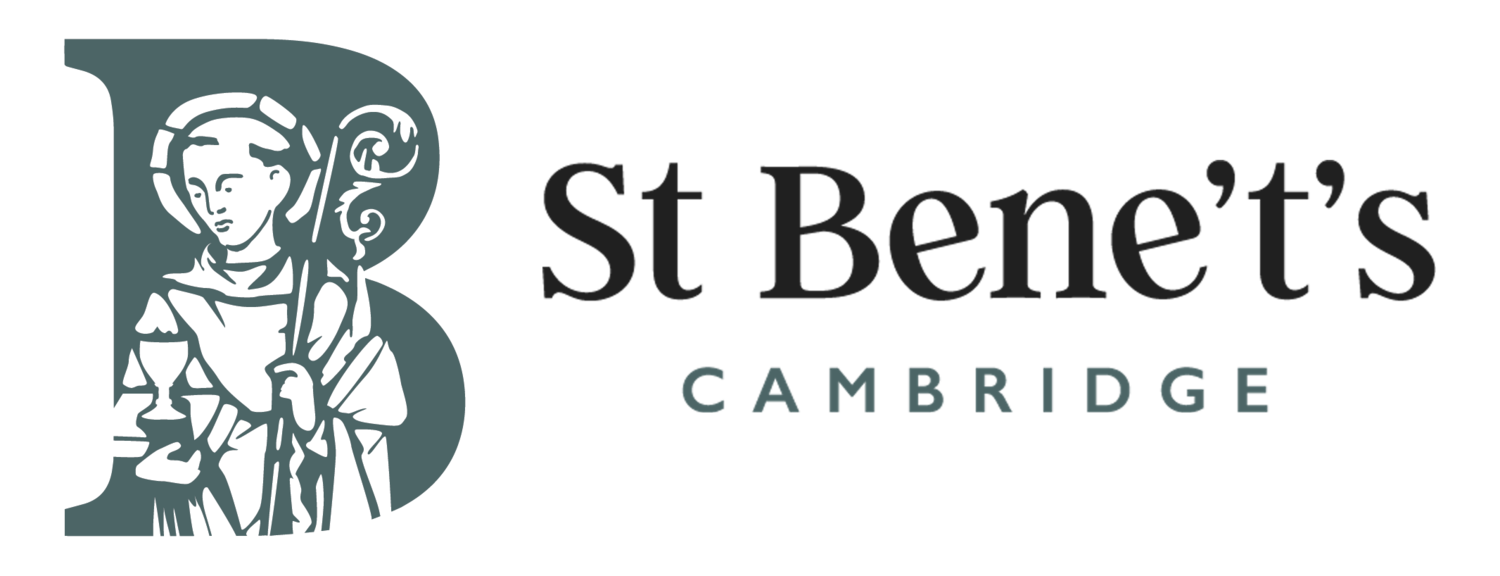Famous 17th & 18th Century Parishioners
Public minded businessman, devout parishioner
Thomas Hobson (c. 1544-1631) was an entrepreneur who started a large livery stable on the site of St Catharine’s College. To ensure that all the horses were equally used, rather than allowing the customer to choose what he thought or knew to be the best horse, Hobson offered the customer the next horse in line: ‘This one or none’ (Hobson’s choice). He was a successful and wealthy businessman, with a reputation for honesty. In 1626 he presented the church with a beautiful, leather-bound edition of the Authorised Version of the Bible. Its preface preserves a church calendar commemorating many pre-Reformation saints. He was buried in the chancel.
Churchwarden, republican, iconoclast, benefactor
Thomas Russell (1587-1673) lent £100 to the Parliament and £300 to Oliver Cromwell for payment of his soldiers during the Civil War. Baptized at St Bene’t’s, Russell lived his whole life in Cambridge and collaborated with the Puritan iconoclast William Dowsing in 1643 to remove ‘superstitious’ objects and furnishings at St Bene’t’s, including ‘seven superstitious pictures, 14 cherubim, and 2 superstitious ingraving’. Russell’s later benefaction to the parish is on the boards above the north door, and provided a fund for ‘any poor tradesman’ in need.
Designer of the first concert hall, advocate for excellence in music, ‘Divine and Civil’
Thomas Mace (1612/13–c. 1706), musician and author of Music’s Monument (London & Cambridge, 1676). The book contains a plan and description of a perfect public ‘Musick Roome’, and many descriptions of what Mace considered best practice in music. He believed there was ‘Nothing of Art, and Science, under Heaven, more Properly, Significantly, and Powerfully fit for Divine, and Contemplative Good Christians, than It.’ Mace was married at St Bene’t’s and lived in the parish in a house next to the Mitre Inn with a ‘great Chamber where his organ stood, & a chamber next to it where his stove stood to ayer his viols with, & a Gallerie over the sayd Great Chamber’.
Astronomer and engineer from a poor family
Richard Dunthorne (1711–1775) was an astronomer and surveyor, who, without a university degree took the office of ‘butler’, but was in effect a key research assistant to Roger Long, the Master of Pembroke Hall and Lowndean Professor of Astronomy and Geometry at the University. He is particularly remembered for his study of the phenomenon of the changing apparent speed of the Moon in its orbit. A memorial of remarkable modesty is to be found in the Tower. He is one of the many scientists to reside, work, and worship in the parish, from centuries past to the present day.




